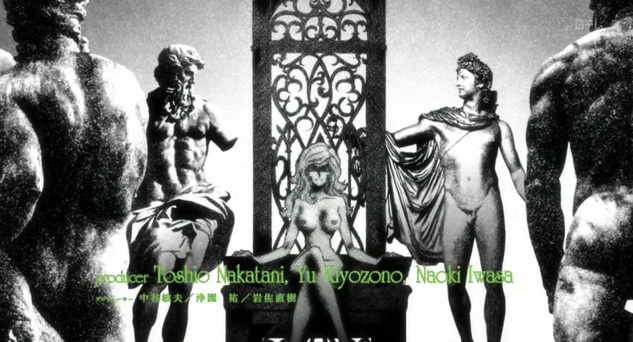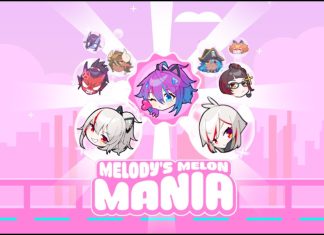First of all, let me preface this piece by noting that this series has been tremendous. As an addition to the Lupin III franchise, it is certainly welcome. However, it is equally, if not more laudable as a standalone. Truly Sayo Yamamoto, the first female director of a Lupin III series, has taken the characters all anime fans have adored for close to 50 years now and fleshed them out to their full potential. While this series was darker, sexier, and more plot driven than the earlier Lupin III series, it did not come across as particularly pretentious or obtuse. Lupin the Third: The Woman Called Fujiko Mine was a rewarding experience, and one I would greatly suggest.
To start dissecting the finale, we start where all anime begins: the opening sequence. While the almost hypnotic OP has been thrown at us since the very first episode, the meaning has always seemed too literal to take seriously. In Maurice Binder, James Bond-eqsue fashion, Mine Fujiko poses dramatically in the nude while reciting her own manifesto. According to her monologue, “a life filled with stealing brings about the ultimate sensuality, it is a prison of sexiness which [I] cannot escape”. Mine Fujiko steals to make pain go away, and in its place, find pleasure. She steals to unobjectify herself by objectifying everything around her; through gaining property and wealth she somehow becomes more human. As inspector Zenigata notes, while Lupin steals for the thrill, Mine Fujiko steals for the wealth; she steals for the intrinsic value of the object. Wealth gives her freedom.

Therefore from the beginning, Yamamoto paints women as the less honorable, though no less powerful sex. And this is a recurring theme throughout the series. Feminine characters such as, Mine Fujiko, the female casino owner, Aisha’s mother, and yes, definitely Oscar use wile, devious plotting, and quite intricate and non-straightforward methods to achieve their goals. Much like Shakespeare’s Lady Macbeth, these characters are true masterminds. While the male characters in the Lupin Universe seek only to uphold their own honor and manliness, the women see further than that. They are not held down by a chivalric code. As Mine Fujiko so aptly puts it, “This is my world. I am free”.
While the conflict between masculine and feminine interests is a major theme of the series, the issue causing the conflict, not the conflict itself is what is important. The romantic conflict between Mine Fujiko and the major male characters, which is ultimately the literal objectifying of women is central to the series as a whole. When Mine Fujiko meets the “human art” in episode 09, Yamamoto makes this obvious. Mine Fujiko is driven to destroy this object. In Mine Fujiko’s eyes, the girl is an abomination against free womanhood. Alas, Mine Fujiko cannot help but see herself in the girl, and chooses to destroy both herself and the art piece. Of course Lupin does not allow this to happen, but knowing that Mine Fujiko is willing to become a martyr to “save” someone from the life of an object provides valuable insight into how Mine Fujiko and Yamamoto see the female. Females may lack the same addiction to honor men possess, but they are no less prideful or idealistic. Aisha’s mother and Oscar are like this too; they are more than willing to die for their cause.
Thus, the major lesson of Lupin the Third: The Woman Called Fujiko Mine is as Lupin puts it, “a woman who acts like a puppet is no fun”. Human beings cannot be reduced to the condition of an object without losing what makes them inherently human. Mine Fujiko takes great lengths to destroy the marionettes of herself in episodes 12 and 13, and in doing so, works to destroy the image others have created for her. Count Almeida worked to brainwash and rob Mine Fujiko, Aisha, and various other girls of their freedom. He made them objects, puppets for his control. Aisha is portrayed as a Darth Vader type figure. She is human, but machine. Her life has been “stolen” from her. When everything is revealed and Mine Fujiko decides “I will always be who I am”, she frees herself from objectivity. She is no longer defined and classified by others as an object is, rather she defines herself as a human does.

Aisha becomes to Mine Fujiko the human art piece she can save. Rather than destroy Aisha, Mine Fujiko enlivens her. She frees Aisha from her machine, her mother, and her prison. She treats Aisha as a human being and not as a tool. The unsettling and ever vigilant eye of Minerva’s Owl no longer reigns over the world. No longer is a grand, divine force determining fates (Mine Fujiko survives on her dying day), Mine Fujiko now has her own life to live, but only through the cooperation of others. As Aisha is saved by Mine Fujiko, Mine Fujiko herself is saved both indirectly and directly by Lupin and the rest of the cast.
Yamamoto is not suggesting therefore that women or men must empower themselves to be free, rather they must seek mutual empowerment. Womankind, mankind, and humankind must work together for the good of all. Just as Mine Fujiko found, as much as she wanted to live alone, Lupin and his acquaintances were entwined in a shared fate. Pride is the primary attribute that connects all people. Pride in what they do, whether it be police work, theft, or swordsmanship; an individual must have faith in himself. When a man or woman loses control of their life, when they succumb to reality of being simply an object, that is when they become lost. Mine Fujiko, Oscar, Lupin III, essentially every character was lost at the start of the series. They did not know exactly what it was they wanted to protect or love. By the end of the series, Mine Fujiko learns she needs to respect, love, and protect her free self. Lupin and Ishikawa learn they must protect Mine Fujiko. While Oscar and Zenigata’s relationship is never repaired, Oscar learns that his love for Zenigata is genuine, and that he is willing to die twice over for it.
Lupin the Third: The Woman Called Fujiko Mine is about the ability within everyone to do good and to help others and themselves. It is at times extremely individualistic, but ultimately the message is cooperative. People work together best when they can see past the superficiality of each other. As human beings with the ability to love and feel, not mere objects to be tossed aside.
At last, I think it is time to close. Lupin the Third: The Woman Called Fujiko Mine is an anime brimming with symbolism, surrealism, and just enough intelligent dialog to warrant such a long post. I am not presenting this information as fact, rather as simply my own interpretation. If you have any opinions of your own, feel free to comment.
“A living man can be enslaved and reduced to the historic condition of an object. But if he dies in refusing to be enslaved, he reaffirms the existence of another kind of human nature which refuses to be classified as an object.”
-Albert Camus










